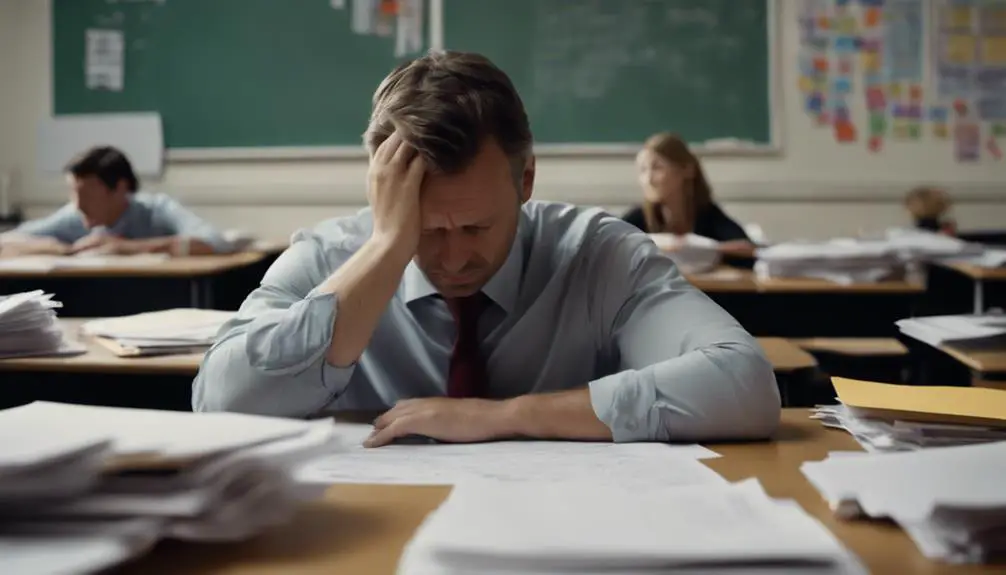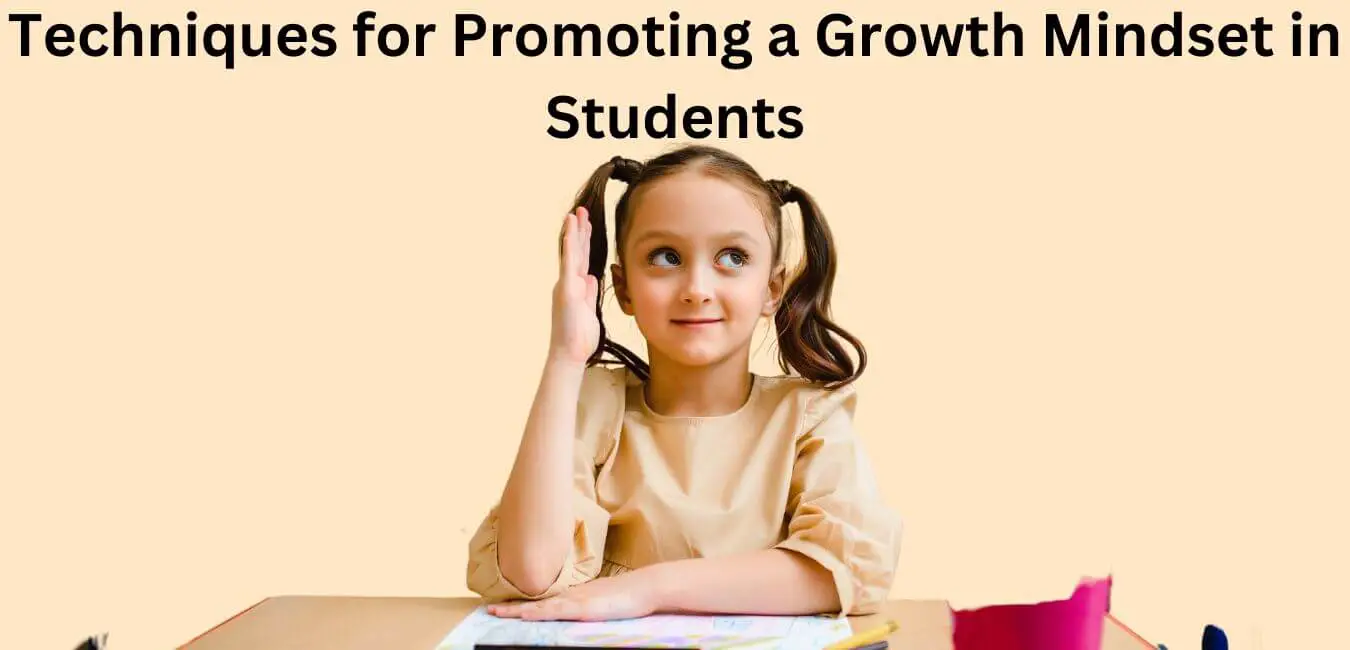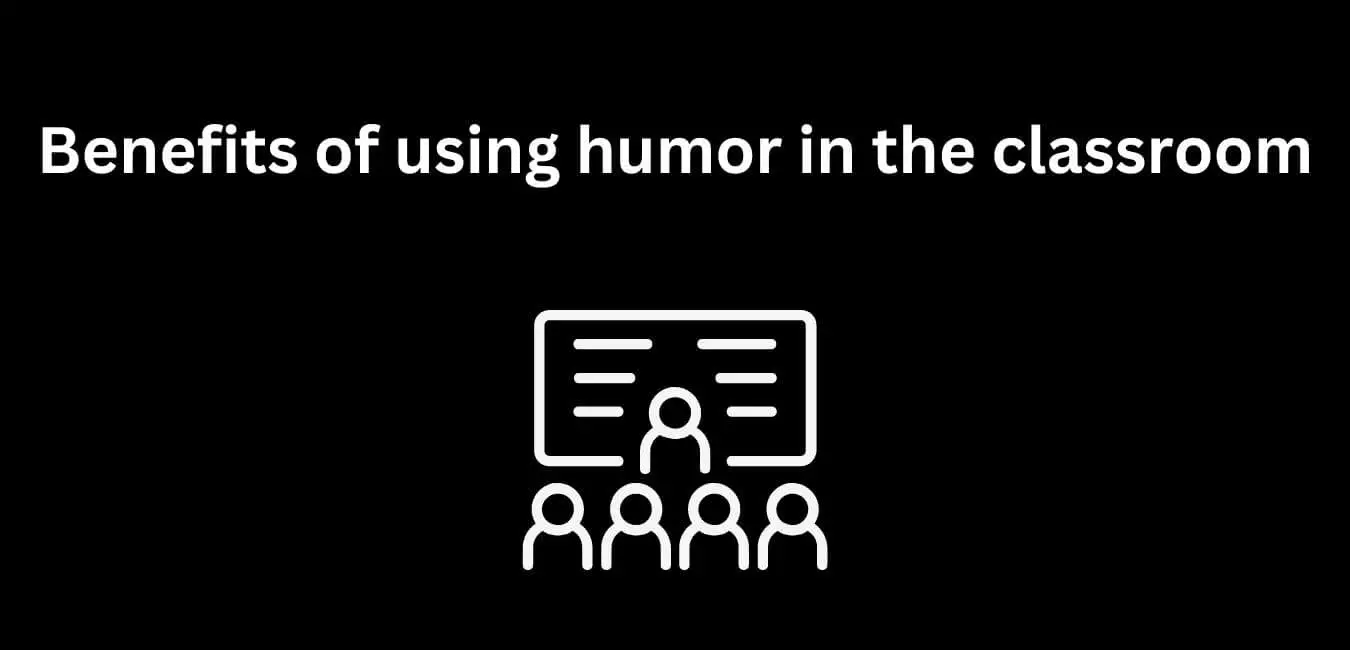Like a conductor orchestrating a symphony, I guide my students through the harmonious rhythm of our daily routines. From morning greetings to team-building games, each activity is carefully designed to foster a strong classroom community.
Together, we cultivate a supportive environment where collaboration and peer feedback flourish.
In this article, I will share the 13 best and most practical strategies I’ve discovered for building a classroom community that empowers and inspires.
Let’s embark on this journey of growth and connection together.
Strategies to Build a Strong Classroom Community Through Daily Routines
Morning Greetings
Starting my day with morning greetings sets a positive tone and fosters a sense of community in my classroom. Creative hellos are a great way to kick-start the day and engage students right from the beginning. I often encourage my students to come up with unique greetings, such as high-fives, fist bumps, or even secret handshakes. These energizing interactions not only help students feel excited about coming to class but also create a warm and welcoming atmosphere.
Personalized greetings are another key aspect of our morning routine. I make an effort to greet each student by name, using their preferred name or nickname. This simple gesture shows that I value and respect each student as an individual, and it helps build a strong bond between us. Additionally, I encourage students to greet their peers in the same way, allowing them to establish connections with one another.
Engaging morning routines go beyond just greetings. I often incorporate icebreaker activities or discussion prompts to encourage students to share and connect with each other. This helps create a sense of belonging and encourages active participation in the classroom.
Classroom Jobs
To continue building a strong classroom community, incorporating classroom jobs is an effective way to engage students and foster a sense of responsibility among them. By assigning various tasks and responsibilities to students, they not only feel a sense of ownership over their classroom, but they also learn important life skills such as teamwork, time management, and task delegation. Here are two ways in which classroom jobs can positively impact students:
- Team Assignments: Assigning students to different teams for specific classroom jobs promotes collaboration and cooperative learning. Working together towards a common goal not only enhances their interpersonal skills but also fosters a sense of camaraderie among students.
- Job Rotation and Student Leaders: Rotating classroom jobs regularly allows students to experience different roles and responsibilities. This not only keeps them engaged but also helps them develop a broader range of skills. Additionally, designating student leaders for certain jobs empowers them to take charge and be responsible for their assigned tasks.
Daily Check-Ins
During my daily check-ins with students, I gather valuable insights into their well-being and academic progress. These check-ins serve as a way for me to connect with each student individually and address any concerns or needs they may have.
Firstly, emotional check-ins are crucial in ensuring that students feel supported and understood. I ask them how they’re feeling and if there’s anything on their mind that they’d like to share. This helps me identify any emotional challenges they may be facing and provide the necessary support.
Attendance check-ins are also important to ensure that all students are present and accounted for. I take note of any absences or tardiness and follow up with the necessary actions, such as contacting parents or providing makeup work.
Academic check-ins allow me to monitor each student’s progress and identify any areas where they may need additional support or guidance. I ask them about their assignments, projects, or any areas they’re struggling with. This helps me tailor my instruction to meet their individual needs.
Social check-ins help me gauge how students are interacting with their peers and if they’re experiencing any social difficulties. I encourage open communication and provide guidance on building positive relationships.
Lastly, behavior check-ins allow me to address any behavioral issues and reinforce positive behavior. I discuss any concerns or incidents that may have occurred and work with the student to find solutions and implement appropriate consequences if necessary.
Shared Goals
As a teacher, I prioritize establishing shared goals within my classroom community to foster a sense of unity and purpose among my students. Collaborative projects are an excellent way to encourage teamwork and cooperation while working towards a common objective. By engaging in goal-setting activities, students learn the value of setting targets and working towards achieving them. It not only promotes a sense of responsibility but also strengthens their problem-solving skills.
To further enhance community building, I incorporate reflection prompts into our shared goal-setting process. These prompts encourage students to think deeply about their progress, challenges faced, and strategies used to overcome obstacles. This reflection fosters self-awareness, emotional intelligence, and a growth mindset among students.
Additionally, I introduce team challenges to our classroom routine. These challenges provide opportunities for students to work together towards a shared goal, promoting collaboration, communication, and leadership skills. Through these challenges, students learn the importance of supporting and encouraging their peers and celebrating collective achievements.
Collaborative Learning
I actively promote collaborative learning within my classroom community to foster teamwork and engagement among my students. Through group projects, problem-solving activities, and peer collaboration, I encourage my students to work together and learn from one another. Cooperative learning is an essential aspect of my teaching philosophy, as it allows students to develop important skills such as communication, critical thinking, and leadership.
To facilitate collaborative learning, I often assign group projects that require students to work together to solve a problem or complete a task. This not only encourages teamwork but also enhances their problem-solving skills. I believe that when students work in groups, they’re exposed to different perspectives and learn to appreciate the strengths and contributions of their peers.
In my classroom, I create a supportive environment where students feel comfortable collaborating with one another. I emphasize the importance of active listening and respectful communication during group work. This helps students develop their interpersonal skills and learn how to effectively work in a team.
To ensure equal participation, I assign roles within each group to ensure that all students have the opportunity to contribute. This promotes accountability and encourages students to take ownership of their learning.
Through collaborative learning, my students not only develop strong academic skills but also build social and emotional competencies that will benefit them beyond the classroom.
Daily Reflections
In fostering a strong classroom community through daily routines, I encourage students to engage in daily reflections, allowing for self-assessment and growth. Daily reflections provide students with the opportunity to develop self-awareness and improve their problem-solving skills.
Here are two ways I incorporate daily reflections in my classroom:
- Self-awareness exercises: I start each day with a few minutes of quiet reflection. Students close their eyes and focus on their breath, allowing them to become more present and aware of their thoughts and emotions. This practice helps them develop a growth mindset and understand their strengths and weaknesses.
- Gratitude journals: At the end of each day, students write down three things they’re grateful for. This simple activity fosters a positive mindset and encourages students to appreciate the little things in life. It also helps them recognize the good in themselves and others.
Circle Time Activities
Effective Circle Time Activities promote active engagement and collaboration within the classroom community. These activities serve as a valuable tool for building a strong and cohesive classroom environment.
Storytelling games are a wonderful way to spark imagination and encourage participation. By taking turns adding to a story, students learn to listen and contribute to a collective narrative.
Sing-along activities not only foster a sense of unity but also enhance language development and memory skills.
Name recognition exercises, such as having students call out their classmates’ names, help create a sense of belonging and familiarity.
Movement-based discussions, where students physically stand or move to indicate their responses, promote active participation and physical engagement.
Lastly, creative expression activities, such as drawing or acting out a scene, allow students to showcase their individuality and encourage collaborative problem-solving.
Empathy Building Exercises
Circle Time activities provide opportunities for empathy-building exercises, fostering a strong sense of compassion and understanding within the classroom community. Empathy is a critical skill that helps students develop an awareness of others’ feelings and perspectives.
Here are some impactful empathy-building activities that can be incorporated into Circle Time:
- Perspective taking exercises:
- Have students take turns sharing personal stories and encourage classmates to imagine themselves in that situation.
- Use role-playing scenarios to help students understand different perspectives and emotions.
- Compassion training:
- Assign students to research and present on a social issue they feel passionate about, encouraging empathy towards those affected.
- Engage in community service projects to provide hands-on experiences that promote compassion.
These activities can be combined with kindness challenges and empathy games to create a fun and engaging learning environment. By actively participating in empathy-building activities, students will develop stronger connections with their peers and become more empathetic individuals. Through these exercises, they’ll learn the importance of understanding, empathy, and compassion in building a supportive classroom community.
Mindfulness Moments
During our Circle Time activities, I incorporate mindfulness moments to further enhance our classroom community’s sense of empathy and understanding. Mindfulness exercises are an integral part of our daily routine, as they allow students to develop self-awareness and focus on the present moment. By practicing mindfulness techniques, such as deep breathing and body scans, students learn to regulate their emotions and reduce stress.
The benefits of incorporating mindfulness in education are numerous. It helps students improve their attention span, concentration, and overall well-being. It also promotes a positive classroom environment by fostering empathy and compassion towards others. Mindfulness practice encourages students to listen actively, respect different perspectives, and respond thoughtfully.
Here is a table that illustrates some mindfulness exercises we engage in during our Circle Time:
| Mindfulness Exercise | Description |
|---|---|
| Deep Breathing | Taking slow, deep breaths to calm the mind and body |
| Body Scan | Paying attention to physical sensations from head to toe |
| Mindful Listening | Focusing on sounds in the environment without judgment |
| Gratitude Practice | Reflecting on things we are thankful for |
Incorporating mindfulness moments into our classroom routine has been beneficial for both students and myself. It creates a calm and supportive atmosphere, allowing for meaningful connections and a deeper understanding of one another.
Peer Feedback Sessions
I regularly facilitate peer feedback sessions as a key component of our classroom community-building efforts. These sessions not only promote collaboration and communication among students but also foster a sense of ownership and responsibility for their own learning. By providing students with the opportunity to evaluate and provide feedback to their peers, they develop a deeper understanding of the subject matter and enhance their critical thinking skills.
During these sessions, I employ various feedback techniques to ensure effective feedback and promote peer evaluation. Some of the strategies I use include:
- Encouraging students to provide constructive criticism: By emphasizing the importance of offering feedback that’s specific, actionable, and respectful, students learn to provide meaningful suggestions for improvement.
- Implementing feedback strategies that promote a growth mindset: I encourage students to view feedback as an opportunity for growth rather than as a judgment of their abilities. This helps them embrace challenges and see mistakes as learning opportunities.
These feedback sessions not only benefit the individual receiving feedback but also the student providing it. Through the process of evaluating their peers’ work, students develop their own critical thinking and analytical skills. This fosters a supportive and inclusive classroom environment where everyone feels valued and empowered to grow.
Class Discussions
A key aspect of building a strong classroom community is engaging in meaningful class discussions. These discussions not only foster critical thinking skills but also create a sense of belonging and collaboration among students. Class discussions provide an opportunity for students to explore various topics and share their perspectives, enhancing their understanding of the subject matter. To ensure the effectiveness of class discussions, a diverse range of topics can be incorporated, such as current events, literature analysis, problem-solving scenarios, debate topics, and personal experiences. By incorporating these varied topics, students are exposed to different viewpoints and learn to respect and appreciate the diversity of opinions. To illustrate the importance of class discussions, the following table showcases the benefits of each topic:
| Topic | Benefits |
|---|---|
| Current events | Encourages critical thinking and awareness |
| Literature analysis | Enhances comprehension and interpretation |
| Problem solving scenarios | Develops analytical and decision-making skills |
| Debate topics | Promotes effective communication and persuasive skills |
| Personal experiences | Fosters empathy and understanding |
Team-building Games
To cultivate a strong classroom community, team-building games are essential. These games not only promote a sense of belonging and togetherness among students but also provide opportunities for them to develop important skills such as communication, problem-solving, and cooperation.
Here are some examples of team-building games that can help foster a positive and supportive classroom environment:
- Icebreaker activities: These games are designed to break the ice and help students get to know each other better. They create a comfortable and welcoming atmosphere, encouraging students to open up and build connections with their peers.
- Trust-building exercises: These games focus on building trust and creating a safe space for students to express themselves. They involve activities that require students to rely on each other and develop a sense of trust and reliance.
- Problem-solving challenges: These games encourage students to work together to solve problems and find solutions. They promote critical thinking and collaboration, as students need to communicate effectively and brainstorm ideas as a team.
- Communication games: These games aim to improve students’ communication skills by providing opportunities for them to practice active listening, express their thoughts clearly, and understand different perspectives.
- Cooperative learning activities: These games promote cooperation and teamwork among students. They involve tasks or projects that require students to work together towards a common goal, fostering a sense of unity and shared responsibility.
Celebrating Successes
As we continue to foster a positive and supportive classroom environment through team-building games, it’s important to also focus on celebrating successes. Recognizing achievements, sharing accomplishments, acknowledging progress, highlighting victories, and commending achievements are all essential in creating a strong classroom community.
Celebrating successes not only boosts students’ self-esteem but also encourages them to strive for excellence. By recognizing their achievements, we validate their hard work and dedication. Whether it’s a small milestone or a major accomplishment, every success should be acknowledged and celebrated.
Sharing accomplishments with the whole class creates a sense of unity and camaraderie. It allows students to support and cheer for their peers, fostering a positive and encouraging environment. Furthermore, highlighting victories can inspire others to work towards their own goals and aspirations.
Acknowledging progress is equally important. By praising students for their efforts and improvements, we motivate them to continue growing and learning. It reinforces the idea that progress is valuable and should be celebrated as much as the end result.
Conclusion
Building a strong classroom community through daily routines is essential for creating a positive and supportive learning environment. From morning greetings to celebrating successes, these practices foster connection, collaboration, and growth.
By incorporating shared goals, collaborative learning, and peer feedback sessions, students develop important skills such as teamwork, communication, and empathy. Through the use of team-building games and class discussions, students engage in meaningful interactions and build strong relationships.
By implementing these strategies, educators can cultivate a classroom community that thrives on mutual respect and support.














